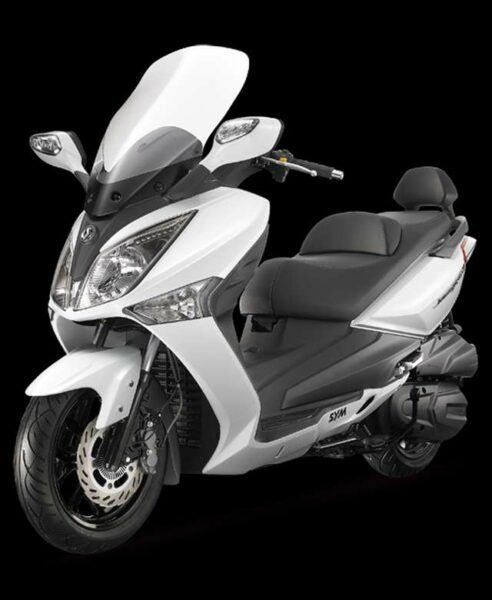
The device and principle of operation of the camshaft position sensor
Content
Modern engines have a rather complex structure and are controlled by an electronic control unit based on sensor signals. Each sensor monitors certain parameters that characterize the operation of the motor at the current time, and transmits information to the ECU. In this article, we will consider one of the most important elements of the engine management system - the camshaft position sensor (DPRV).
What is DPRV
The abbreviation DPRV stands for camshaft position sensor. Other names: Hall sensor, phase sensor or CMP (English abbreviation). From the name it is clear that he participates in the operation of the gas distribution mechanism. More precisely, on the basis of its data, the system calculates the ideal moment of fuel injection and ignition.
This sensor uses a 5 volt reference voltage (power) and its main component is a Hall sensor. He himself does not determine the moment of injection or ignition, but only transmits information about the moment the piston reaches the first TDC cylinder. Based on these data, the injection time and duration are calculated.
In its work, the DPRV is functionally connected with the crankshaft position sensor (DPKV), which is also responsible for the correct operation of the ignition system. If for some reason the camshaft sensor fails, the basic data from the crankshaft sensor will be taken into account. The signal from the DPKV is more important in the operation of the ignition and injection system, without it the engine simply will not work.
DPRV is used on all modern engines, including internal combustion engines with a variable valve timing system. It is installed in the cylinder head, depending on the design of the motor.
Camshaft position sensor device
As already mentioned, the sensor works on the basis of the Hall effect. This effect was discovered back in the XNUMXth century by a scientist of the same name. He noticed that if a direct current is passed through a thin plate and placed in the field of action of a permanent magnet, then a potential difference is formed at its other ends. That is, under the action of magnetic induction, part of the electrons is deflected and forms a small voltage on the other edges of the plate (Hall voltage). It is used as a signal.
The DPRV is arranged in the same way, but only in a more advanced form. It contains a permanent magnet and a semiconductor to which four contacts are connected. The signal voltage is sent to a small integrated circuit, where it is processed, and ordinary contacts (two or three) are already coming out of the sensor body itself. The body is made of plastic.
Principle of operation
A master disk (impulse wheel) is installed on the camshaft opposite the DPRV. In turn, special teeth or projections are made on the camshaft master disk. At the moment these protrusions pass through the sensor, the DPRV generates a digital signal of a special shape, which shows the current stroke in the cylinders.
It is more correct to consider the operation of the camshaft sensor together with the operation of the DPKV. Two crankshaft revolutions account for one camshaft revolution. This is the secret of synchronizing the injection and ignition systems. In other words, the DPRV and DPKV show the moment of the compression stroke in the first cylinder.
The crankshaft master disk has 58 teeth (60-2), that is, when a section with a two-tooth gap passes by the crankshaft sensor, the system checks the signal with the DPRV and DPKV and determines the injection moment into the first cylinder. After 30 teeth, injection occurs, for example, into the third cylinder, and then into the fourth and second. This is how synchronization happens. All of these signals are pulses that are read by the control unit. They can only be seen on the oscillogram.
Symptoms of a malfunction
It should be said right away that with a faulty camshaft sensor, the engine will continue to work and start, but with some delay.
A malfunction of the DPRV may be indicated by the following symptoms:
- increased fuel consumption, since the injection system is not synchronized;
- the car moves in jerks, loses dynamics;
- there is a noticeable loss of power, the car cannot pick up speed;
- the engine does not start immediately, but with a delay of 2-3 seconds or stalls;
- the ignition system works with misfires, misfires;
- the on-board computer shows an error, the Check Engine lights up.
These symptoms can indicate a malfunctioning DPRV, but they can also indicate other problems. It is necessary to pass diagnostics in the service.
Among the reasons for the failure of the DPRV are the following:
- contact and wiring problems;
- there may be a chip or bend on the protrusion of the master disk, thereby the sensor reads incorrect data;
- damage to the sensor itself.
By itself, this small device rarely fails.
Ways to check
Like any other sensor based on the Hall effect, the DPRV cannot be checked by measuring the voltage at the contacts with a multimeter (“continuity”). A complete picture of its work can only be given by checking with an oscilloscope. The oscillogram will show pulses and dips. To read data from the oscillogram, you also need to have certain knowledge and experience. This can be done by a competent specialist at a service station or in a service center.
If a malfunction is detected, the sensor is changed to a new one, no repair is provided.
DPRV plays an important role in the ignition and injection system. Its malfunction leads to problems in the operation of the engine. If symptoms are found, it is better to get diagnosed by competent specialists.
Questions and answers:
ГIs there a camshaft position sensor? It depends on the powertrain model. In some models it is to the right, while in others it is to the left of the motor. It is usually located near the top of the timing belt or at the back of the crown.
How to check the camshaft position sensor? The multimeter is set to DC current measurement mode (maximum 20 V). The sensor chip is disconnected. The power is checked in the chip itself (with the ignition on). Voltage is applied to the sensor. Between the contacts there should be about 90% of the voltage of the supply indicator. A metal object is brought to the sensor - the voltage on the multimeter should drop to 0.4 V.
What does the camshaft sensor give? Based on the signals from this sensor, the control unit determines at what moment and in which cylinder it is necessary to supply fuel (open the nozzle to fill the cylinder with fresh BTC).


One comment
ddbacker
what is the difference between a passive and an active sensor?: can e.g. both types are used to replace a broken sensor?
Is there a quality difference between the two types?
(I don't know if the original is a passive or active sensor)